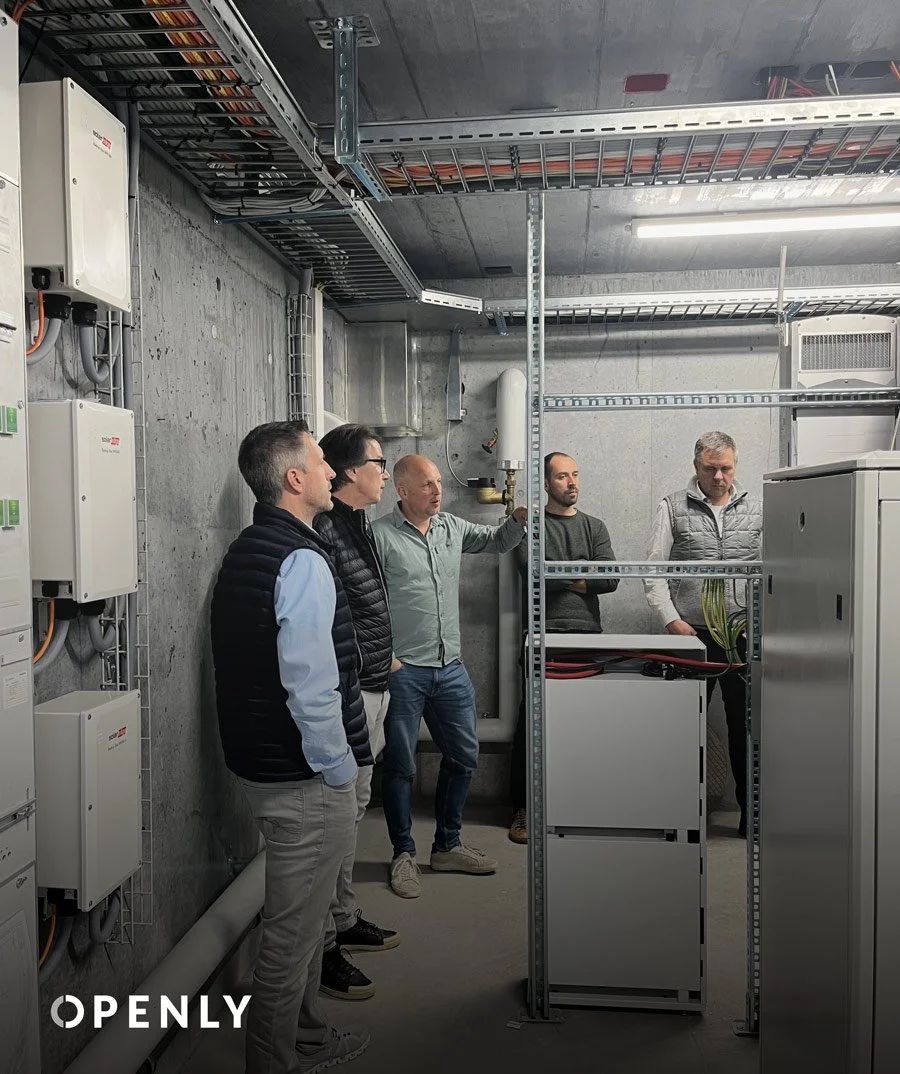Investments in smart energy solutions increase returns on real estate
Numerous studies from the DACH region show a clear correlation between low energy costs and higher returns on real estate. Investments in intelligent energy solutions in particular act as an effective lever for increasing value.
The Fraunhofer Institute (2022) documents that buildings with integrated energy management systems have significantly lower operating costs.
A study by the German Economic Institute (2021) shows that sustainable energy optimization increases rental demand and thus improves the return on investment.
In Switzerland, the Wüest Partner Institute (2023/24) confirms that properties with optimized energy efficiency are better positioned in the market environment and generate higher returns in the long term.
Intelligent technologies such as automated controls, smart heating and cooling systems and the integration of renewable energies not only reduce energy consumption, but also increase the attractiveness for tenants and investors. Companies and building owners benefit twice over: through reduced operating costs and increased market values. The consistent implementation of carbon management and the use of biogenic building materials further enhance these effects.
The conclusion of the study: Investments in intelligent energy solutions are a decisive factor for sustainable improvements in returns in the real estate sector.
-
Climate neutrality of rented apartment buildings - but how? (EBZ study, 2022)
Does energy retrofitting pay off? An analysis of German multifamily building data (2025)
Energy transition in private households: Great potential in existing housing stock (KfW Research, 2022)
Institut der deutschen Wirtschaft (IW Köln) "Energy efficiency in the real estate industry" (2021, updated analyses)
Wüest & Partner: "Swiss Real Estate Market" (2023/2024)
Fraunhofer Institute: Study as part of the "Energy transition in the building sector" project (2022)
Valley Widnau: Energy efficiency in the pilot project
Innovative construction system with proven cost-effectiveness
The Valley Widnau pilot project demonstrates how a modern building system can achieve significant energy efficiency. The precise heating cost billing proves exceptionally low consumption values and confirms the cost-effectiveness of the concept. High-quality insulation, modern building technology and intelligent heat distribution significantly reduce energy consumption - even against the backdrop of current challenges in the building sector.
Advantages for owners and tenants
The high energy efficiency leads to noticeable savings on ancillary costs and increases the attractiveness and value retention of the property. In the Valley Widnau pilot project, condominium owners pay just CHF 200 per month (all-in) for a 4.5-room apartment. The sustainable construction method makes it possible to increase net rents while keeping operating costs low.
Important parts of energy management at Valley Widnau:
Solar systems as standard
Solar installations on 95 percent of the roof surface are almost indispensable in new build and renovation projects. In view of rising energy costs, they offer a clear economic advantage and provide sufficient energy to achieve the PlusEnergy standard.
Performance of photovoltaic systems
In Central Europe, a photovoltaic system generates around 200 kilowatt hours (kWh) per square meter per year - roughly equivalent to the annual consumption of a dishwasher.
Building physics and heating requirements
Thanks to excellent building physics, an OPENLY building only requires around 10 watts per square meter of heating power. The PlusEnergy standard is therefore easily achieved.
Heat pump
The self-generated electricity from the photovoltaic system enables the efficient operation of an electrically powered heat pump. The choice of energy source - geothermal probe, earth baskets or air - depends on the location. Depending on the system, heat pumps achieve a coefficient of performance (COP) of between 2 and 4; air heat pumps achieve values of up to 6 in summer. This means that two to four kilowatt hours of heat are generated with one kilowatt hour of electrical energy.
Optimized energy distribution through intelligent control
Heat storage tanks (water tanks) are filled when sufficient energy is available, for example when the sun is shining brightly. The OPENLY OS, a control system based on Eisbär software, monitors the building, integrates weather forecasts and optimizes the use of energy efficiently and in line with demand. Batteries provide support.
Our training
Openly is a transparent and open system: we are happy to share our extensive expertise so that together we can make the greatest possible contribution to climate protection.
Our one-day training courses in the OPENLY.lab give more insight into the how and why and provide access to all OPENLY data.
The next training day is on 25.9.2025 in Widnau, SG.

